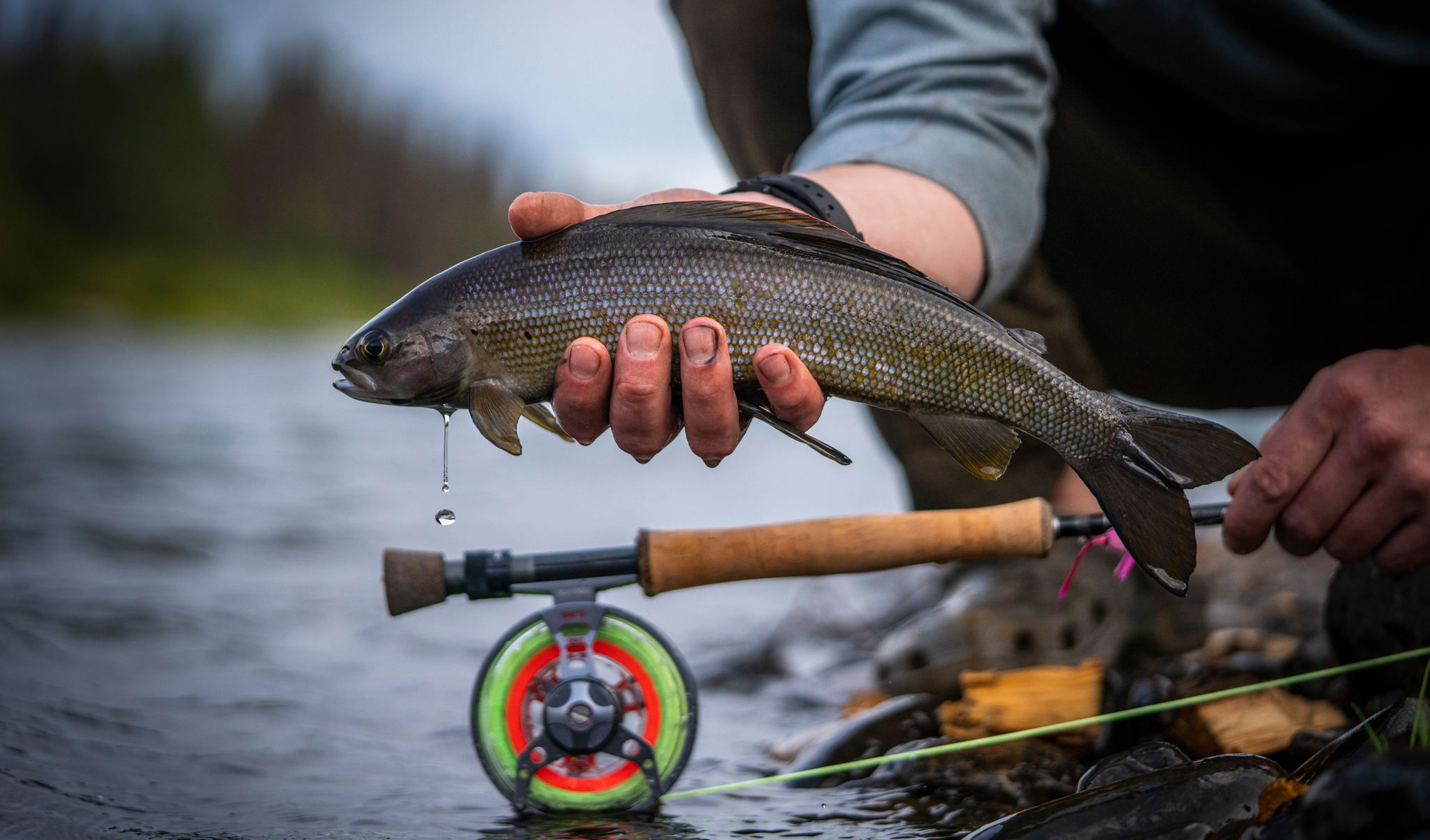WE’RE PULLED OVER on a gravel bank in interior Alaska, peering down a series of Class IV rapids named the Toilet Bowl.
There are five of us in three 30-year-old rafts. No one wants a swirlie. Only one of us, Mary Katherine Fields (everyone calls her MKat), knows how to paddle. She once set a record for successfully kayaking an 80-foot waterfall. The rest of us? Not so much.
Dry bags, rods, fly boxes, a chain saw, and cases of Coors Light are strapped down with bungee cords, zip ties, and fishing netting. We’re the Clampetts on rafts, and we’re making a DIY trip down Lake Creek, a blandly named river in a part of the state often overlooked by most of us in the lower 48.
MKat pops up and down along the bank, scanning for obstacles in the rapids like a gopher on the prairie checking for predators.
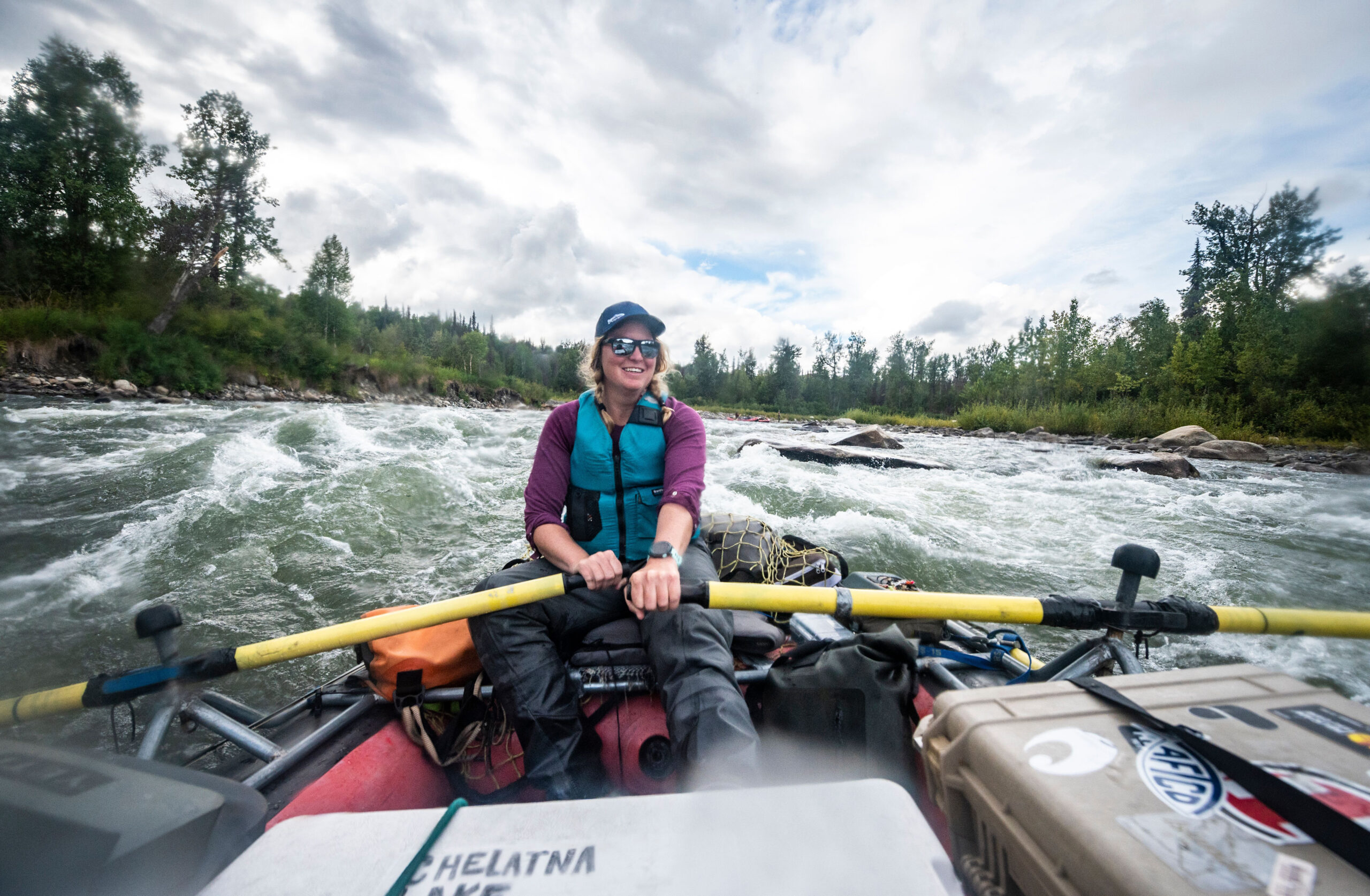
We came here for the fishing: for the fat silver salmon, feisty rainbow trout, and rising grayling. The four days of rafting, grizzly bear sightings, and rapids are a perk, or hazard, depending on who you ask. We want a taste of the Alaska you rarely read about in glossy magazines. The throbbing heartbeat of the center of the state that offers incredible hunting and fishing opportunities but is also facing development, invasive species, and climate changeThese rapids are the moment I’ve been dreading. I’m a mountain and plains person, not a river rat. But we’re on day three, and I knew after the first set of rapids a few miles into day one that we wouldn’t be turning around.
Matt Bertke, an unflappable Alaskan and longtime friend, tosses a rope to me in the front of our boat.
“What am I going to do with this?” I ask.
“Throw it to someone if they flip,” he says, as if that should’ve been obvious. And off we go.
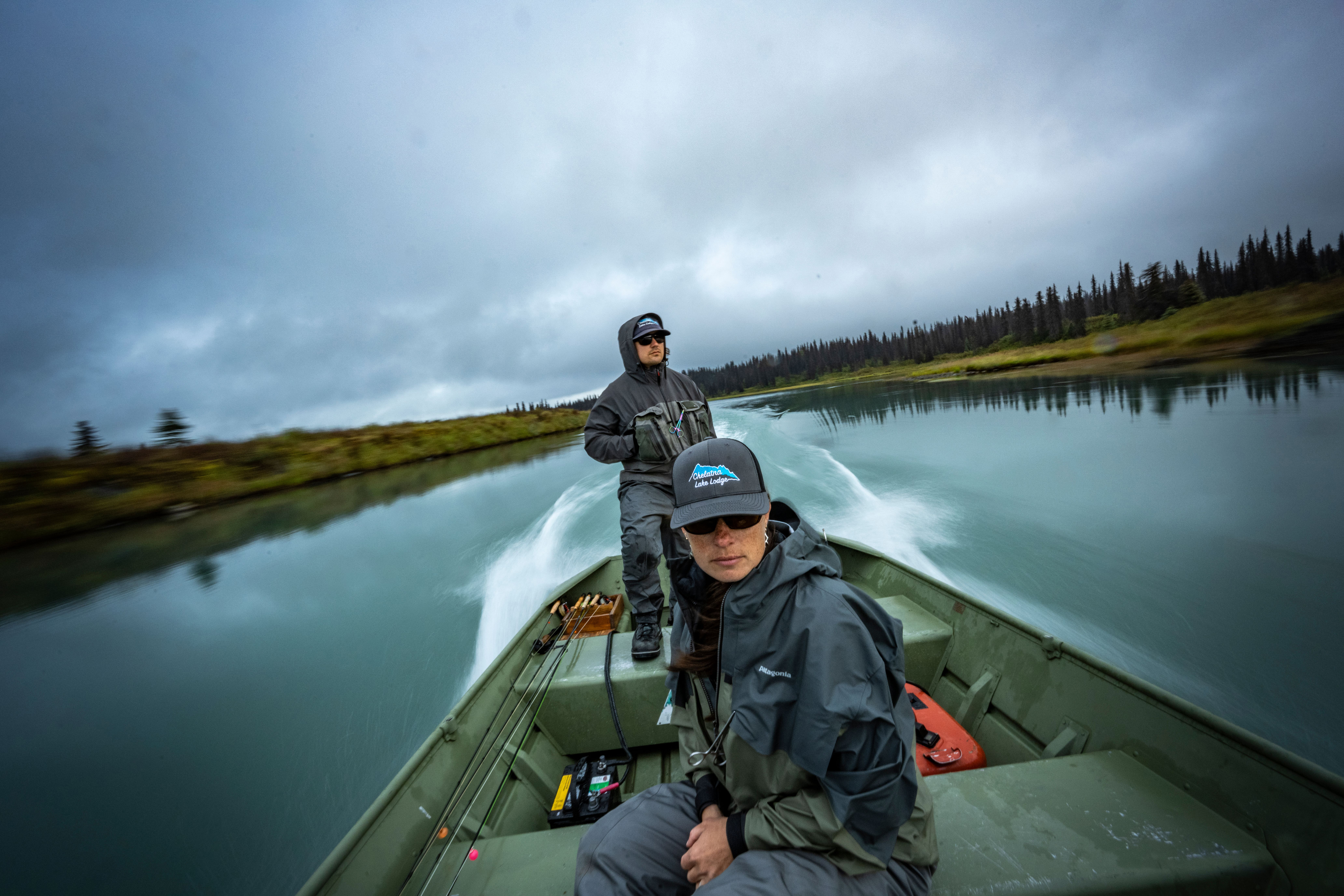
The Motley Crew
A couple weeks earlier, Matt and I were on the phone, me in Wyoming, him at Chelatna Lake Lodge at the head of Lake Creek. Matt’s family bought the place in 1988, when remote Alaska lodges were places for hardcore hunters and anglers. It’s about 100 air miles from Anchorage, nestled at the base of the Alaska Range and in the shadow of Denali, North America’s highest peak. It’s one of those spots that sell themselves: four cedar chalets with floor-to-ceiling views of the 8-mile-long lake rimmed with alder-covered mountains and a snowcapped Mount Russell looming over it all.
Matt runs a swanky business with fully guided trips, optional helicopter flights to glaciers, three-course meals, and cocktails before dinner. But there wasn’t going to be anything swanky about our own trip.
My husband and I worked for Matt and his family years ago. I know each hole and rapid on the top stretch of Lake Creek. But about 2 river miles from the lodge, where the rapids begin, is the point of no return for about 50 miles until Lake Creek hits the confluence of the Yentna River, where floatplanes can land on a stretch of water that resembles the Mississippi River.
Matt rafted Lake Creek once over a decade ago with his high school buddies. No one died or flipped.
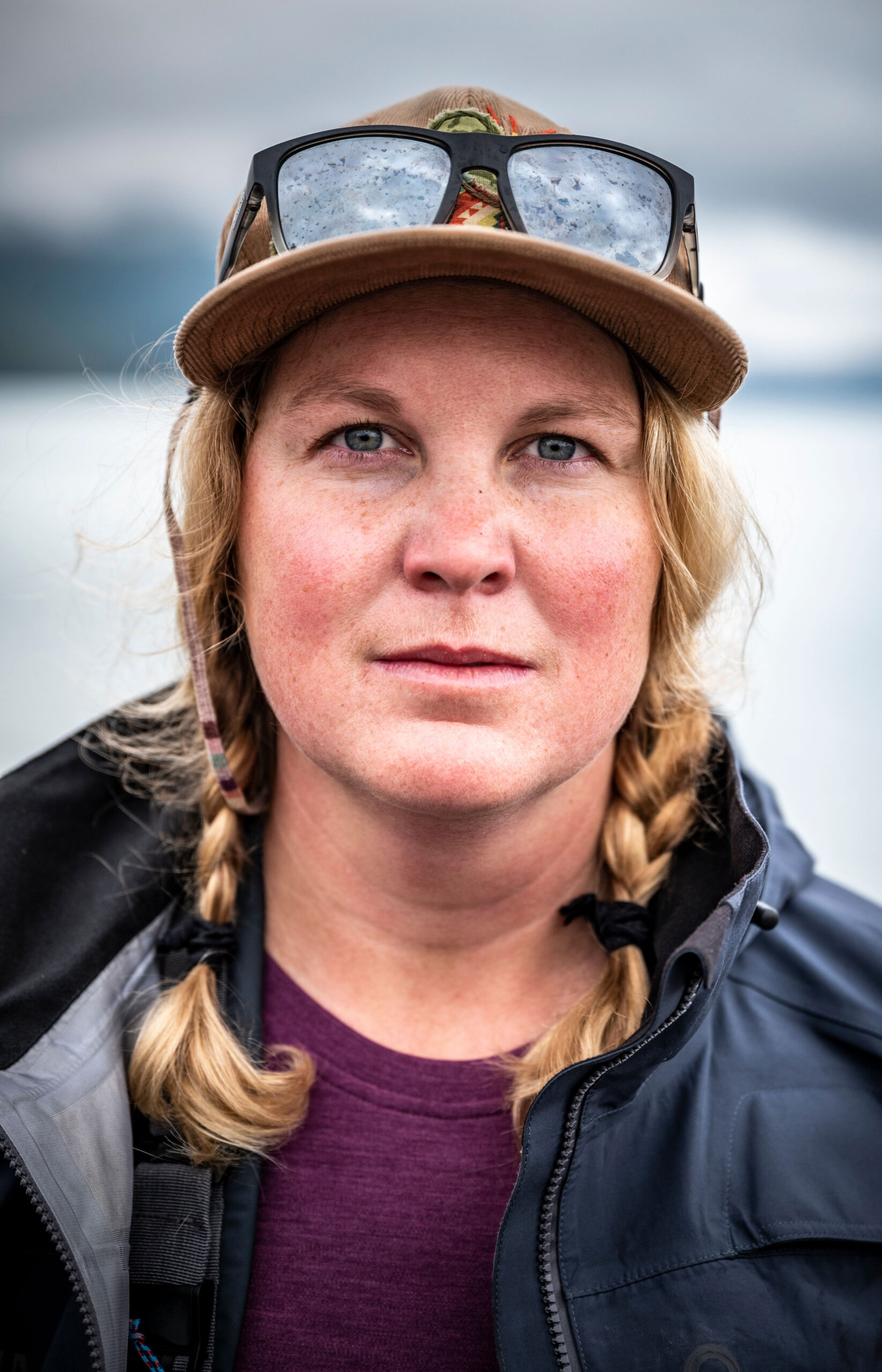
MKat rafted Lake Creek two years ago during high water. She’s 28, but between life losses and years spent on water, she has the ease and confidence of someone in their mid-40s. She paddles while Jess Haydahl, our photographer, shoots. Jess and I have plenty of outdoor credentials and a similar amount of rafting experience (essentially none).
Dave Bacon is on the oars in another raft, the contents of which look as if they belong to a fratty serial killer. He’s got most of the Coors, the coolers, and a hatchet with a leather glove tied around the blade. A few miles downriver, Matt, 31, tells me that Dave, also 31, has never paddled before. I turn around to look at Big Red Dave, nicknamed for his red hair, fair skin, and penchant for forgetting sunscreen.
He’s fishing, high centered on a rock he’s using as an anchor. He’s from Anchorage, and he spends chunks of each summer on commercial fishing boats catching sockeye salmon by the hundreds and removing them from nets. These commercial fishermen barely sleep. They work through storms and calm days and everything else. His opinion so far?
“This rafting is fun, but it’s making it hard to fish.”
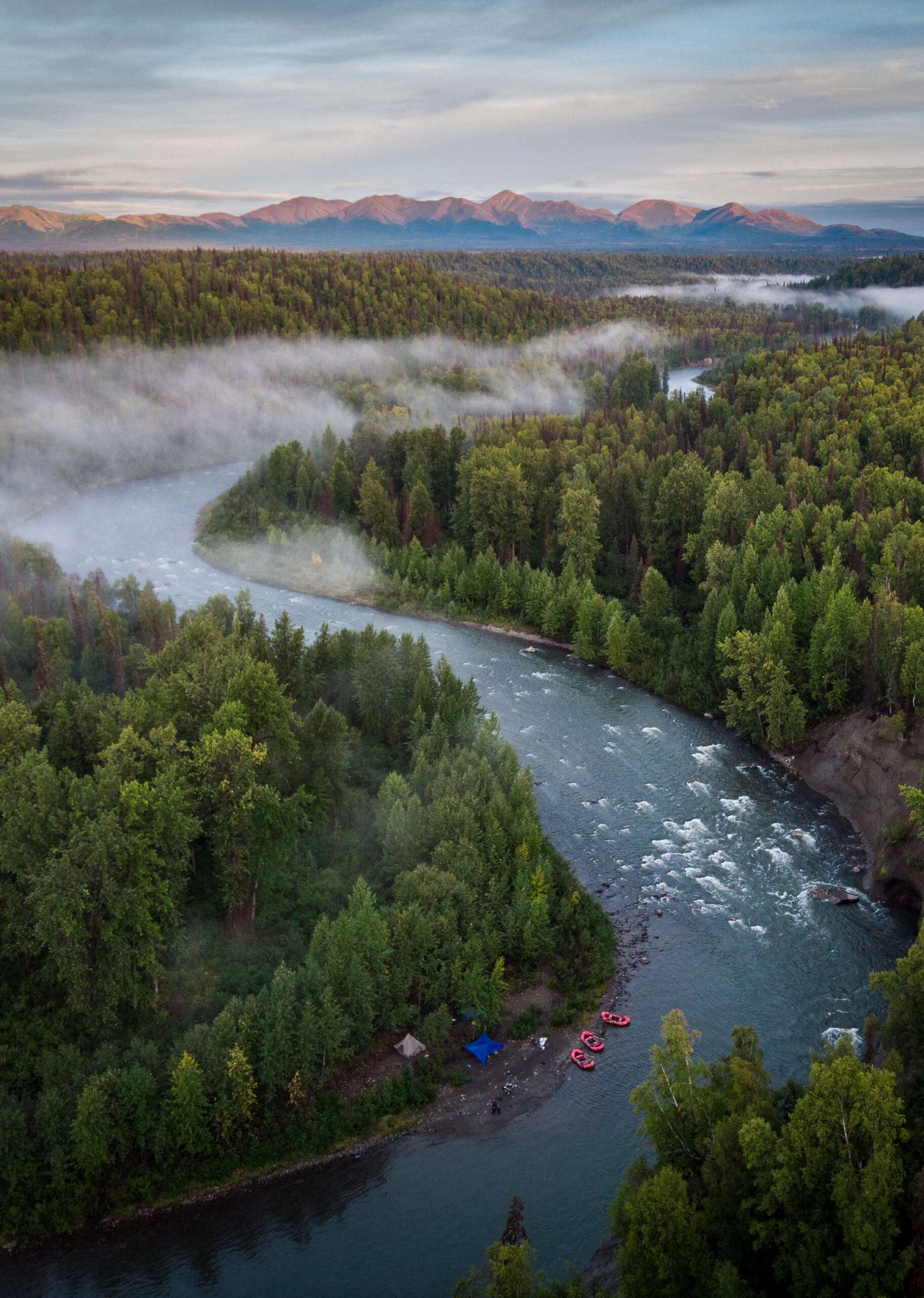
Most lower 48ers who dream about Alaska want to fish the most prestigious rivers. Think the Kongakut River in the Arctic National Wildlife Refuge, or the Nushagak River where it dumps into Bristol Bay.
But what about the rest of the state? What about that south-central portion beginning at the base of Denali and the Alaska Range, which feeds mesmerizing braids of rivers that eventually end up in Cook Inlet near Anchorage? Turns out they’re just as wild as the Kongakut, only without the polar bears.
By the end of the first day, we are camped on a gravel beach in the rain cooking salmon on cedar planks over the fire. In a matter of hours, we landed silver salmon, Arctic grayling, and more rainbow trout than anyone cared to count.
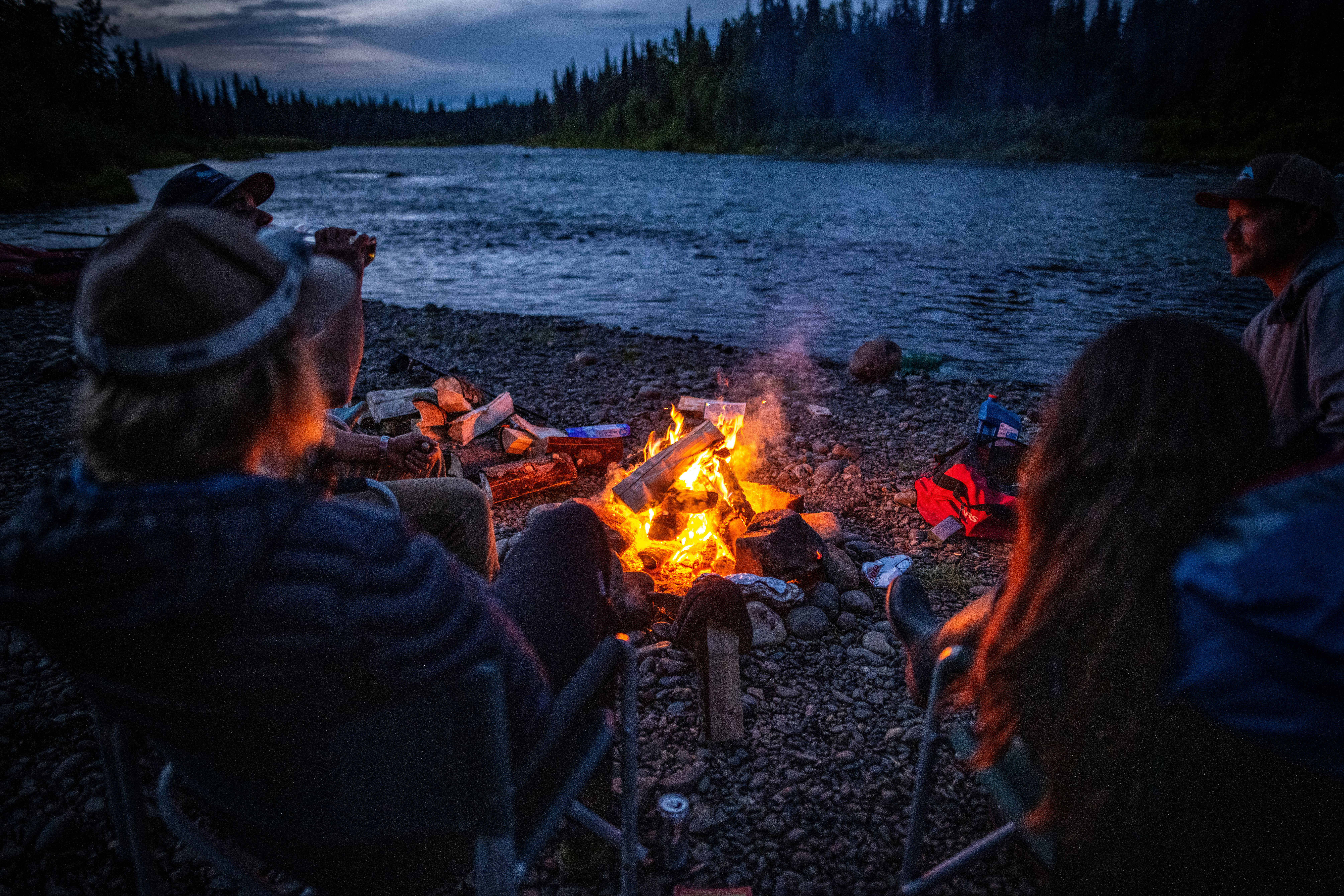
One Thousand Cuts
I stumble out of our tent the next morning into a fog so thick we can’t see the next river bend. Dave is already fishing, squinting into the haze as he casts. Dense clouds cling to brown spruce trees, a reminder of a pine beetle epidemic ravaging giant swaths of interior Alaska and Canada, fueling wildfires that are usually uncommon in this area.
We’re no more than tiny specks in a state bigger than Texas, California, and Montana put together. Even Southcentral Alaska, which sounds like a spit of unremarkable land, encompasses millions of acres framed by massive mountains. Glaciers drape over peaks and wind down the valleys. Most are retreating now, leaving behind scars they took millions of years to carve.
From those glaciers rush an endless series of creeks and rivers that crash haphazardly into the spruce-and-alder-filled lowlands. Lake Creek runs into the Yentna River, which makes its own series of zigs and zags until it intersects with the mighty Susitna River. The Susitna is the 15th-biggest river in the U.S. and has the fourth-largest king salmon run in the state. In fact, all five species of salmon run from Cook Inlet up through Lake Creek, as do Dolly Varden, grayling, rainbow trout, and transplanted northern pike. Plop Lake Creek anywhere in the lower 48, and it would be one of the top waters. In Alaska, it’s just another stream.
This river valley has kept humans alive for millennia. The Dena’ina and Ahtna Athabascan people have always lived by hunting, fishing, and whaling. Many still do. The land is their food, their history, and their culture, inseparably wound together, says Nicole Swenson, the interim executive director of the Tyonek Tribal Conservation District.
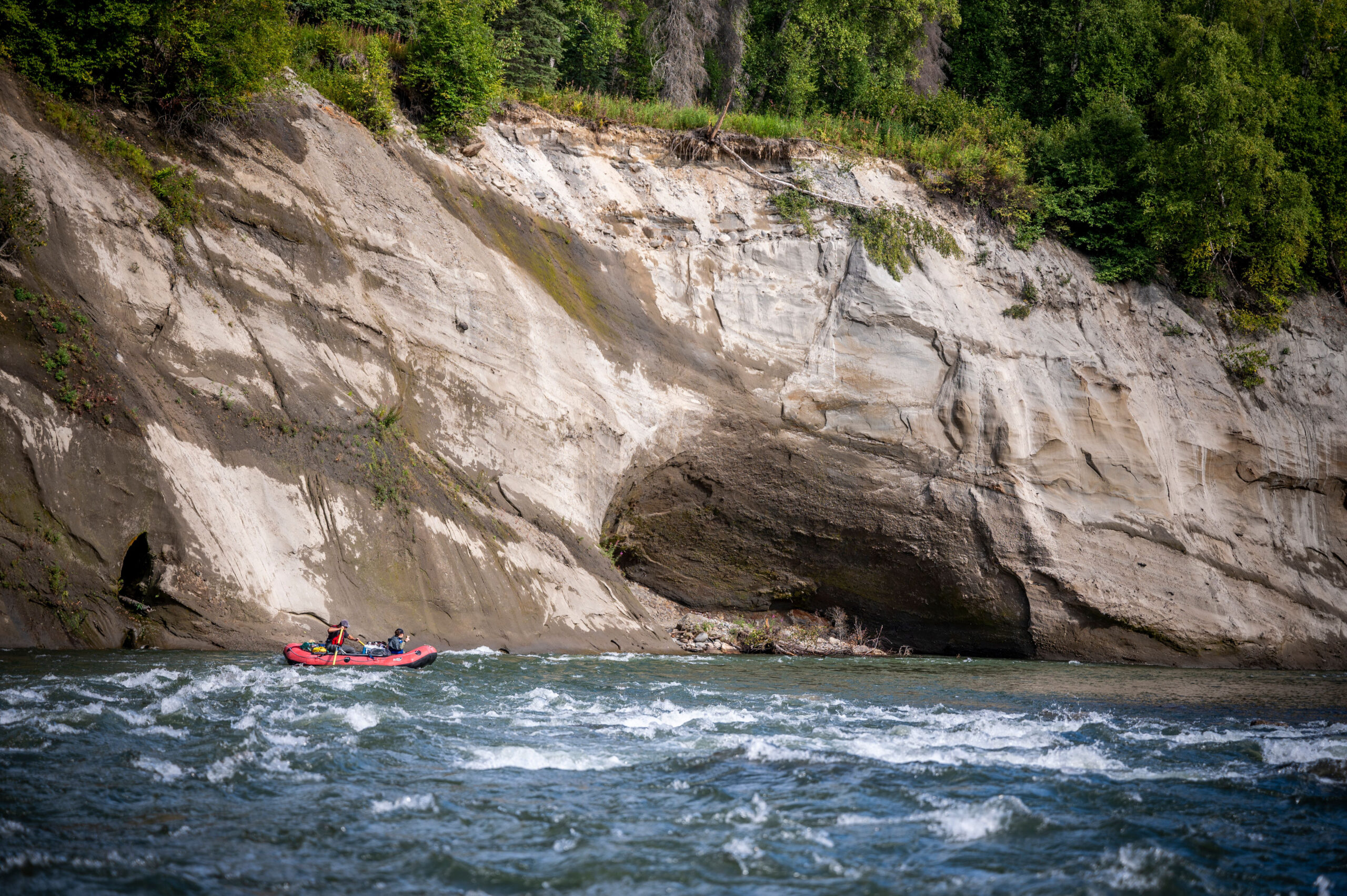
Many Dena’ina live in Tyonek, about 40 air miles from Anchorage and accessible only by boat or plane. The watershed keeps lodges, outfitters, and guides in business year after year. But this area is facing intense human pressure from nearby Anchorage, a city of more than 280,000 people. Nearby Mat-Su Borough, short for Matanuska-Susitna, is one of the fastest-growing areas in the country. It’s bolstered largely by Anchorage escapees.
Industrial developments are also encroaching on the wilderness here. The Alaska Industrial Development and Export Authority, an arm of the state, is considering building a 108-mile-long road with 25 bridges and about 440 culverts. A gold mine claim, owned by Australian company Nova Minerals, would be the ultimate destination.
The Matanuska-Susitna Borough’s public affairs department released a video in 2019 marketing the road as a means of getting to millions of currently inaccessible acres of public land. It’s unclear, however, if the road will actually be open to the public. And whether the proposed road’s impact on the Susitna Valley’s wetlands and fisheries could be significant, says Eric Booton, Trout Unlimited’s sportsmen coordinator.
“It’s alarming to many hunters and anglers,” he says.
Then there are the invasive species and warming waters. Elodea canadensis, an aggressive, invasive aquatic plant, can choke out entire waterways. Spruce beetles are tearing through hundreds of millions of acres in the interior. Monitors in the Chuit River showed almost two weeks where the daily average temperature exceeded 68 degrees in 2016 and 2019. That’s dangerously warm for salmonids.
“If we want to save these species, they need every little spring and tributary they can get for shade and cool water,” says Swenson. “You start picking off all of that, it will be a bigger impact as change keeps coming.”
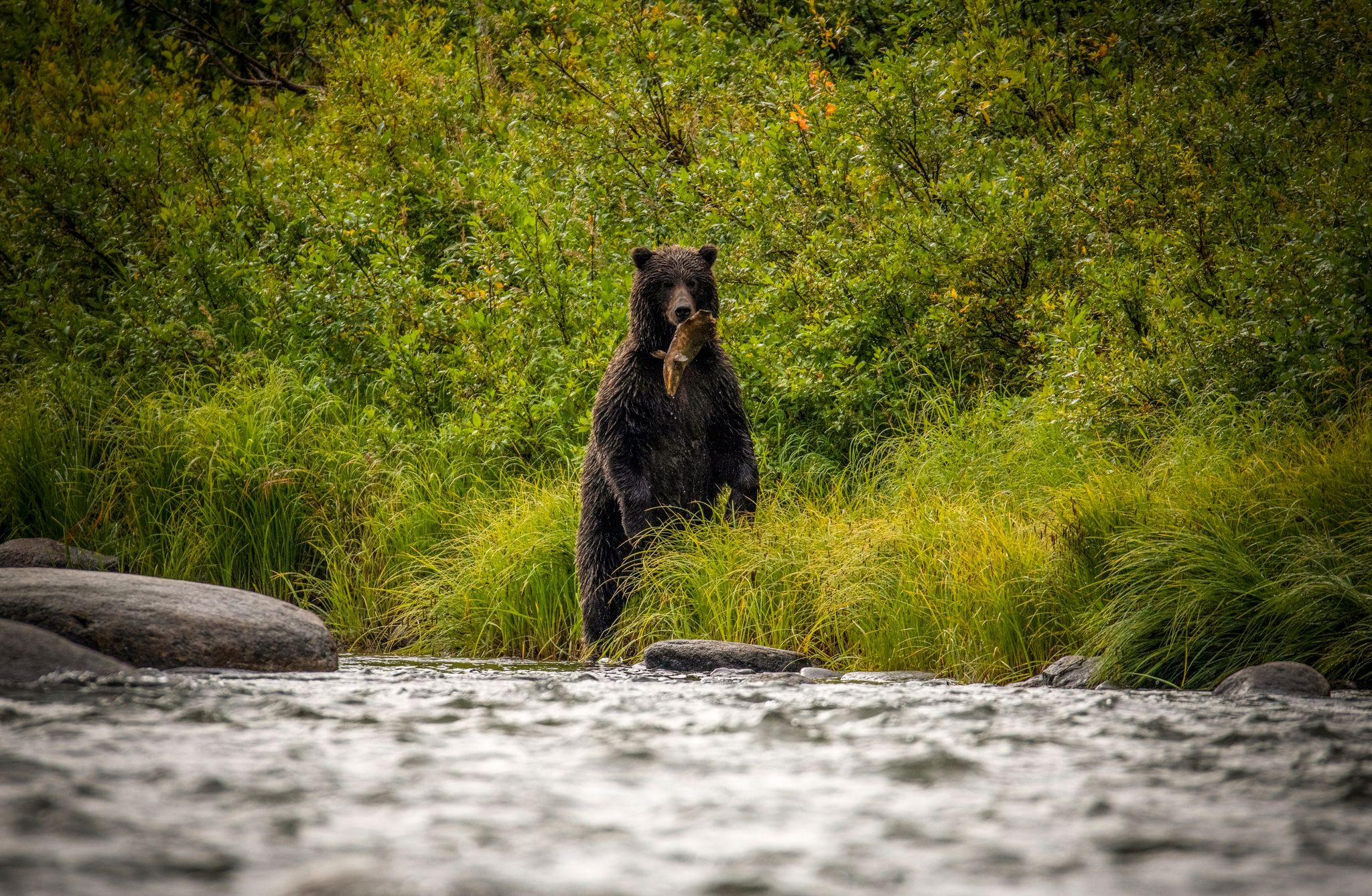
Life and Death on the River
Few places put life and death on such display as rivers in Alaska. The overwhelming smell of rotten fish hits us when we pull up to camp on a beach across from a 100-foot cutbank. Pink, sockeye, and silver salmon carcasses line the rocks. One lone king salmon has washed up. Its 4-foot-long body looks straight out of a bad zombie movie.
Salmon spawn, die, and begin rotting, and their decomposing bodies nourish the next generation. They feed the entire food web in the area, from bugs to bears. A couple hours before our landing, we came upon a female brown bear and her three cubs feasting on spawning salmon. She ran when we passed, face-planting into the dirt as she retreated to the woods. Her cubs followed her into the trees before she came charging back out at our boats, barking a warning at us.
Behind the spawning salmon come the rainbow trout, filling their distended bellies with eggs.
Almost everything we throw seems to be working on the trout. Egg-sucking leeches, Dolly Llamas, beads. The salmon are proving trickier this late in the season.
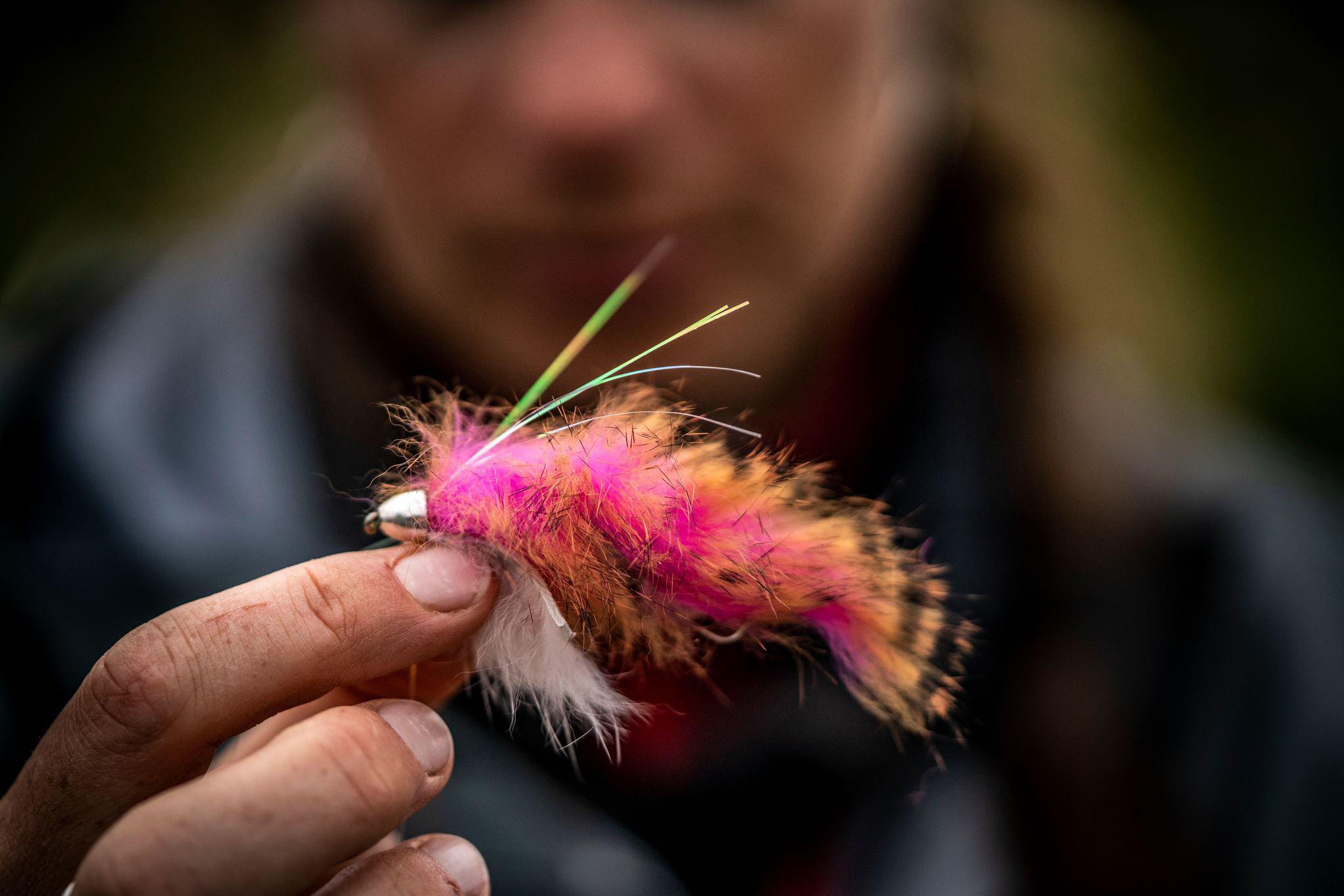
We made it through the Class IV Toilet Bowl this afternoon. All I could think about was the description of Lake Creek in an aging book about paddling Alaska: “Continuous stretches of Class III whitewater and a serious Class IV canyon exist about halfway down the river. This river should be attempted only by expert paddlers.”
But the level of difficulty depends largely on how much water is pushing down at any given moment. Some submerged rocks are no longer dangerous at high water. Others become holes, sucking anything nearby into the cold abyss.
Lake Creek is currently low. Earlier, as I crouched down in the bow, staying out of Matt’s view of rocks and shouting a heads-up if I saw logs coming, he back-paddled, steered, and swore. Moments later, we were out, pulling over next to MKat and Jess on another stretch of salmon-strewn beach. Dave came through last. It took longer than it should have. Matt started walking up the beach, scanning rapids above. Then we saw his gray shirt popping up and down through the waves as he maneuvered his raft through. He landed in the gravel next to us, grabbed his fly rod, and started casting.
Another set of rapids is coming tomorrow.
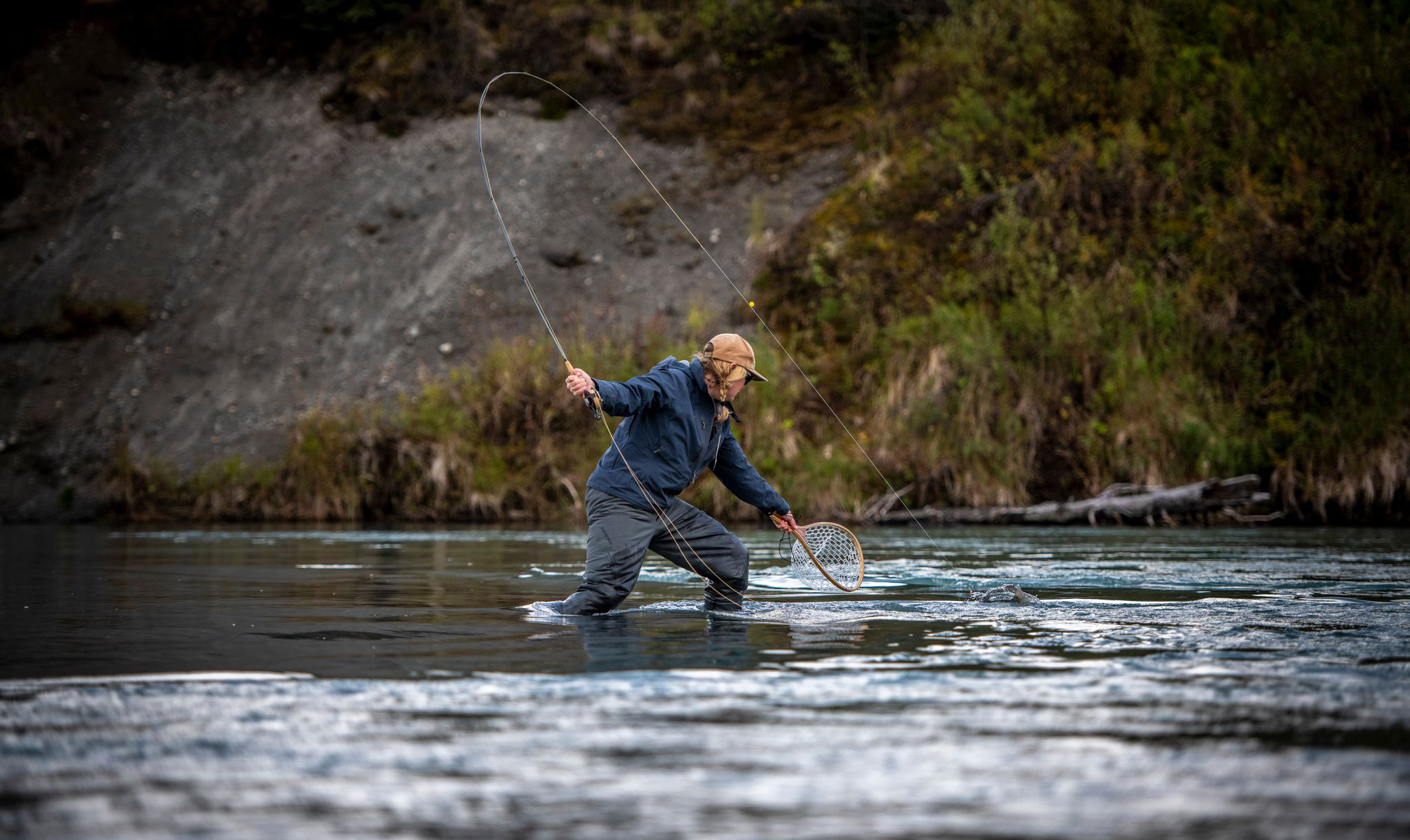
A Fishery’s Story, Left to Write
During our last evening on the river, we catch some 12-to-14-inch rainbows and fat grayling, sunbeams glowing through their long dorsal fins.
Then I hook into something big, stronger than any rainbow I’ve caught and feistier than a zombie sockeye. It leaps out of the water, and we see the dark-chrome streaks of a silver salmon.
The fish and I struggle until it nearly reaches the bank. It flips once more and is gone.
I cast again and again but don’t catch another.
Then, with little notice, a storm smacks into us, clipping our table, camp stove, and soup and sending gear flying. We gather anything not staked down and huddle under a tarp until the rain and wind pass, leaving as suddenly as they started.
By midmorning the next day, we are bobbing down our last leg of the river. We have 22 miles left, and it’s clear we’re not in the mountains anymore. Spruce trees have faded into birch and cottonwoods. The chill has lifted.
The second set of rapids appears suddenly.
“Oh God,” MKat says, popping up and down again from her raft, scanning for hazards, then rowing. Then she’s gone.
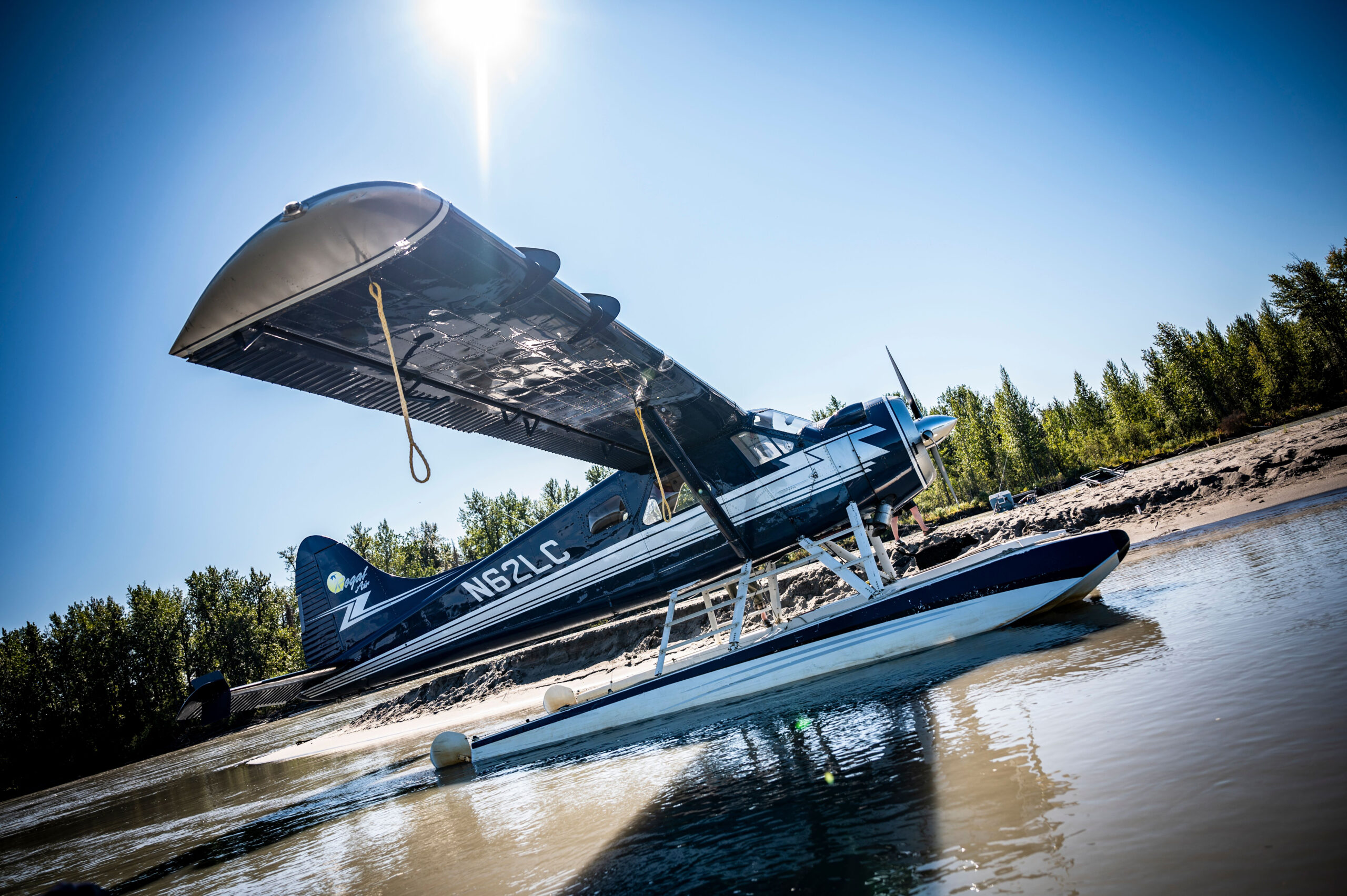
We drop into the first rapid, the water rushing us down into a bowl to the left, then crashing over us as we paddle right, avoiding a big boulder in front and a log on the other side. The boulders are scary; downed trees are worse. And on rivers that routinely flood and switch courses, logs are everywhere.
We make it through, then hit another rapid and another, each a bit milder than the previous one. I flick my line in any water that looks fishy.
Read Next: Lost in the Gloom: A Dream Mountain Goat Hunt Turns into a Nightmare
Aside from a few faded “No Trespassing” signs—who landowners worry might be trespassing, I’m not sure—and a couple of bush planes far overhead, we’ve seen no signs of humanity for the past five days. That kind of isolation makes the hum of a boat motor sound bizarre.
But a few miles upstream from the confluence of the Yentna River, jet boats zip around, carting silver salmon fishermen. Most are guided, some have cabins here.
The river has turned into a jungle now. We navigate our rafts through partially submerged trees and around muddy banks. It’s hot, mosquito filled, and muggy. It’s hard to imagine this river valley as anything but wild, and it’s tempting to fantasize about what some of our favorite rivers in the lower 48 might have been like before industrial development, invasive species, dams, and pollution. For a few days at least, Lake Creek offered us a glimpse into that past.
This story originally ran in the Alaska issue of Outdoor Life. Read more OL+ stories.
